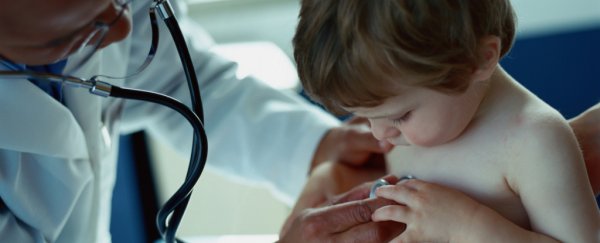When the novel coronavirus invaded the US, public-health messaging focused on the most vulnerable: older Americans and those with underlying conditions, like heart and lung disease.
Young people, especially children, seemed to be largely protected, and research has held that message up.
In an April study of more than 2,500 US children and adolescents with COVID-19, the Centers for Disease Control and Prevention (CDC) found that under-18-year olds made up only 1.7 percent of all reported coronavirus cases, even though they make up 22 percent of the population.
Most infected kids had mild or asymptomatic cases, similar to research from the Chinese CDC. Only 14 percent, at most, kids aged 1 to 17 with the disease were admitted to the hospital.
But new reports of children with COVID-19 coming down with, and sometimes dying from, a mysterious respiratory illness dubbed "pediatric multisystem inflammatory syndrome" has parents understandably on edge.
The syndrome had affected at least 100 children and killed at least three in New York alone by May 12. In Europe, where it was reported earlier, there were at least 100 cases in seven countries by April 30.
Here's how to spot symptoms of both conditions in your child:
Symptoms of COVID-19 in kids is similar to those in adults
Like adults, children who come down with COVID-19 may experience the following symptoms:
- Cough
- Shortness of breath or difficulty breathing
- Fever
- Chills
- Muscle pain
- Sore throat
- New loss of taste or smell
Also like adults, this list isn't exhaustive and continues to evolve as more people are tested and diagnosed.
For instance, some people, including children, who test positive have other symptoms like a runny nose, vomiting, or diarrhoea.
Symptoms of the rare inflammatory syndrome being seen in kids include gastrointestinal issues
Pediatric multisystem inflammatory syndrome seems to appear after kids have come down with COVID-19.
While at first doctors weren't sure if or how the condition was connected to the coronavirus, a study published May 13 in the Lancet found there was a "strong association" between the two.
The medical community's best theory is that the syndrome is "due to the immune response of the patient," Jeffrey Burns, a critical care specialist at Boston Children's Hospital, told CNN.
The syndrome has been likened to rare childhood conditions such as Kawasaki Disease or toxic shock syndrome. According to the American Academy of Pediatrics, symptoms include:
- A persistent fever
- Abdominal pain, diarrhoea, or vomiting
- Rash or changes in skin colour
- Difficulty breathing
- Fatigue or confusion
If you notice symptoms of either condition in your child, call your paediatrician.
This article was originally published by Business Insider.
More from Business Insider:
